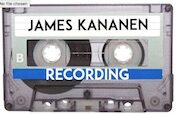A recording studio is any place things can be recorded. An environment for performance and listening. For this reason, proper acoustic treatment optimized for a wide variety of frequencies and content. The key to ensuring the best sound possible, is not any equipment but the knowledge and proper execution of every stage of recording, from the source, all the way to reproduction for the listener.
In it’s most basic form, a recording studio is a microphone and some sort of recording device. Whether its analog tape or a computer and interface, the concept is the same. Translate the sound from a physical manifestation, to a electric signal that can be stored, and played back or reproduced via speakers or headphones.
Headphones and Monitoring
While recording, it is often preferable to use headphones. The reason why, is otherwise the sound from the speaker would get picked up by the microphone. While recording is usually done with headphones for the artist, with the addition of a soundproof glass window, the engineer in a recording studio can monitor the sound back from the control room speakers. The control room is acoustically treated to be an ideal listening environment, as well as a control center for the recording studio.
Microphones
Different microphones are used to record the source of the sound, whether it is an acoustic instrument, voice, or guitar or bass speaker cabinet. Different Microphones or Mics sound different. No 2 designs sound exactly the same, and it is the audio engineers responsibility to choose the proper microphone for the job. In the case of an electronic keyboard or other instrument that produces no sound of its own, a DI box is used to plug the instrument in. The microphone or DI box is connected to the microphone pre amplifier or preamp with an XLR cable. The XLR cable is a 3 wire cable that connects audio devices like microphones, pre amps, and DI Boxes. If the microphone is being used for vocals, a pop filter will be attached. The microphone is held in position with a microphone stand, which vary in size and adjustability. The microphone placement and individual character of each model, as well as the pickup pattern of the microphone will affect the sound. Sounds can vary from thick to thin, from detailed to
Microphone Preamp
The microphone goes into a small piece of gear called the microphone pre amplifier or mic pre amp, which goes into the audio interface or recorder. If a mixing board is being used, the mic pre amp is usually at the top because it is the first stage where the level can be adjusted. This brings the sound signal coming down the XLR cable to a reasonable level.
Audio Interface
The audio interface is what connects the sound to the computer. Converting the analog signal to digital using a computer algorithm to render a digital version of your analog signal, that is coming into the audio interface from the microphone preamp.
Analog Recording
Analog Recording is the same process, except using a tape machine as the recorder. The analog signal travels into the machine and a electromagnet records the signal onto magnetic tape. I have access to analog recording gear, but it is expensive to purchase tape and takes more time to explore analog possibilities. Now a days, the same results can be achieved using digital emulation of analog devices. Digital processing is far more reliable and hassle free.
